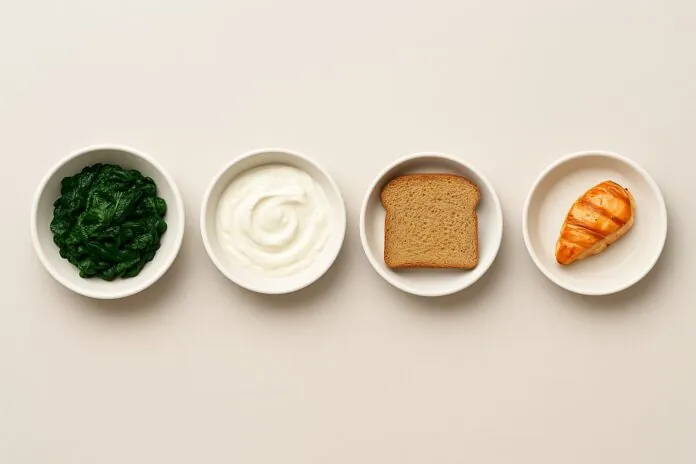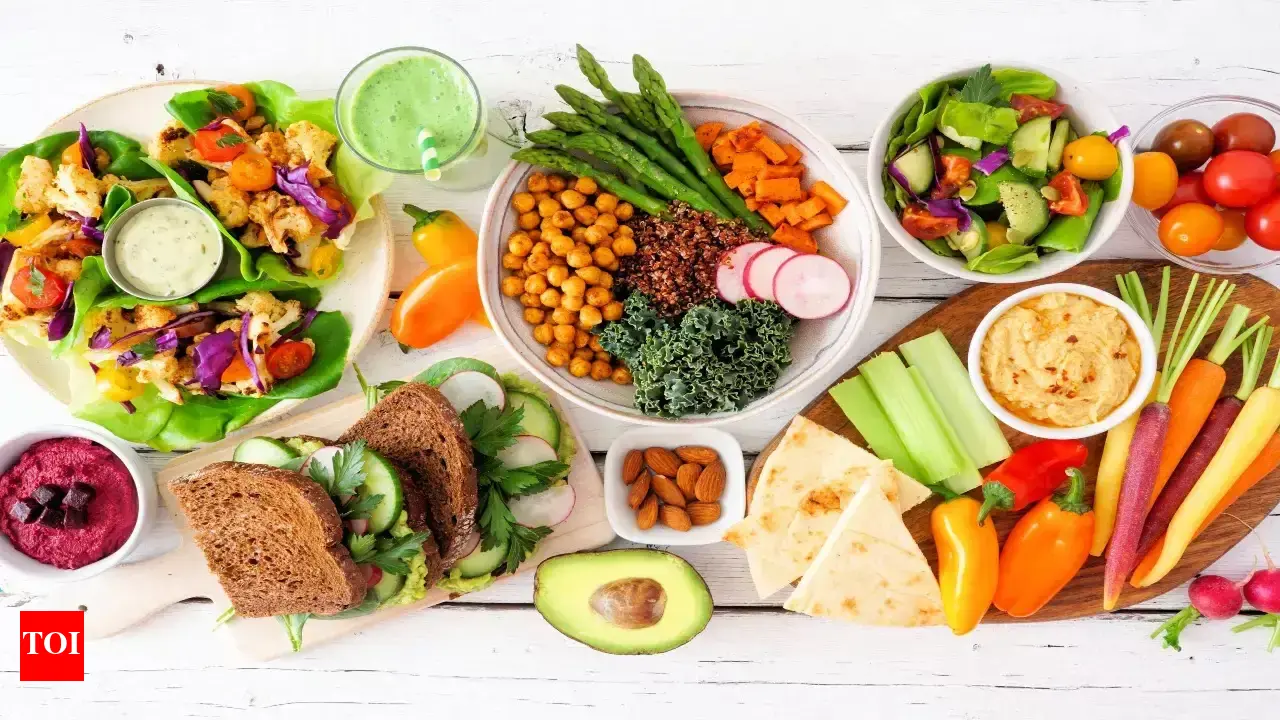
Most people think about what they eat. Almost no one thinks about the order they eat it. That one detail changes everything.
Not in theory. In real life. The way your plate gets emptied matters. It affects how full you feel and how long that fullness lasts.
Also, it affects how much energy you have two hours later. Meal sequencing means eating in a specific order. Not rules or restrictions, but just order. Start with vegetables. Then eat protein and fat. Finish with carbs.
That one switch can steady your blood sugar. It can calm your appetite. It can cut the crashes that make people tired, bloated, or constantly reaching for snacks. No one needs a new diet. No one needs a miracle food.
Most people just need a better rhythm. Meal sequencing gives that rhythm. You still eat what you like. You just eat it in the right order. And once you do, your body handles the rest.
What Does Meal Sequencing Mean
Meal sequencing means eating each part of your meal in a specific order.
- Vegetables come first.
- Protein and fat come second.
- Carbohydrates come last.
That order changes how your body reacts to food. It keeps blood sugar steady, helps you stay full longer, and keeps energy from crashing. Most people eat everything on their plates in random bites.
That leads to sugar spikes, fast drops in energy, and constant hunger. When the order follows the right pattern, your body handles food better. Digestion slows down. Cravings drop. Hormones stay balanced.
Dr. Lisa Shah, a chief medical officer, called meal sequencing “a simple, low-effort and cost-effective strategy that may be especially valuable in real-world diabetes management.” That means it is something real people can use without counting, measuring, or tracking anything. Just by adjusting the order of food, you give your body more control.
Why Food Order Matters
Each food group triggers a different process once it enters your body.
- Vegetables slow digestion.
- Protein supports balance. (Including all those vegan proteins)
- Carbohydrates increase blood glucose.
The order in which those foods reach your system decides what comes next. That order determines how much energy gets used and how much gets stored.
Eating quickly absorbed carbohydrates at the start of a meal creates an immediate rise in blood sugar. That forces the body to release a large amount of insulin in a short window.
The spike feels powerful at first, but it drops fast. What follows is fatigue, more hunger, and the start of another cycle that leads to overeating. Weight gain often begins that way.
When the meal begins with fiber, the body takes longer to absorb what follows. That pace lowers the pressure on the pancreas and improves how your body responds to glucose.
Protein added next increases satiety signals and supports steady absorption. Carbohydrates that come last do not flood your system. Instead, they integrate into a process already in motion.
The way your body manages energy depends on structure. That structure gets built one bite at a time. Food sequencing gives your system a pattern it can follow without strain. Once the body adjusts to that rhythm, it functions with more ease. Meals become fuel. Hunger becomes predictable. Blood sugar stays controlled without force or confusion. That change begins when food reaches the stomach in the right order.
How It Affects Weight and Energy
Weight gain does not always come from excess. Often, it comes from timing. Meals that start with sugar-heavy foods or starches cause blood glucose to spike. That spike forces the body to produce insulin quickly. When insulin rises fast, fat storage increases.
At the same time, energy burns off unevenly. What follows is a sudden drop that leaves the body tired, hungry, and primed to store even more.
People blame willpower or portion size. The real issue often starts with the food order.
When meals follow the correct sequence, the results shift. Fiber and protein slow digestion. That change limits the rush of sugar into the blood. The body uses energy more gradually. Hunger fades. The brain receives stable signals. That shift leads to fewer cravings and fewer sudden drops in focus.
To see the impact more clearly, try this for one full day:
Example
- Eat a small green salad before breakfast, followed by eggs. Add one slice of toast at the end.
- Begin lunch with raw vegetables, then eat your main protein. Eat fruit after the meal.
- Start dinner with steamed greens or a broth. Follow with meat, tofu, or fish. Add rice or pasta at the end.
Do not change your food. Only change the order. Take note of how long you feel full. Watch how your energy holds through the afternoon. The results often speak loud after just a few meals.
What a Proper Meal Looks Like
Meal sequencing only needs the right order. You do not need complicated meals or special foods. Each meal should begin with vegetables or a high-fiber starter. After that, include a clear source of protein with some healthy fat. Finish with a moderate portion of carbohydrates. That structure gives your body the fuel it needs without overload.
This table shows how that structure works for real meals across the day:
Meal Sequencing Examples
| Meal | Vegetables or Fiber | Protein and Fat | Carbohydrates |
|---|---|---|---|
| Breakfast | Sautéed spinach | Scrambled eggs | Whole grain toast |
| Breakfast | Cucumber slices | Greek yogurt with sunflower seeds | Oatmeal with cinnamon |
| Breakfast | Mixed greens salad | Hard-boiled eggs with olive oil | Slice of rye bread |
| Lunch | Carrot sticks | Grilled chicken breast | Brown rice |
| Lunch | Tomato salad | Lentil patties | Baked sweet potato |
| Lunch | Steamed broccoli | Tuna in olive oil | Chickpeas |
| Dinner | Zucchini soup | Grilled salmon | Roasted potatoes |
| Dinner | Steamed kale | Tofu in sesame oil | Small bowl of couscous |
| Dinner | Roasted asparagus | Baked turkey thigh | Buttered peas |
Final Thoughts on Food Order, Energy, and Control
Food order sets the pace for what happens after each meal. When digestion begins with fiber, moves through protein, and ends with carbohydrates, the body stays balanced. That sequence shapes appetite, energy, blood sugar, and how the body stores or burns what you eat.
Meal sequencing does not rely on restriction. It works with regular foods. The only shift needed is the order on the plate. That small change gives the body a better way to process fuel and send out hunger signals that stay consistent. Once meals follow that sequence often enough, the system begins to regulate itself. Energy flows without spikes or crashes. Appetite stops jumping between extremes. Food becomes something that supports function, not something the body has to fight through.

















